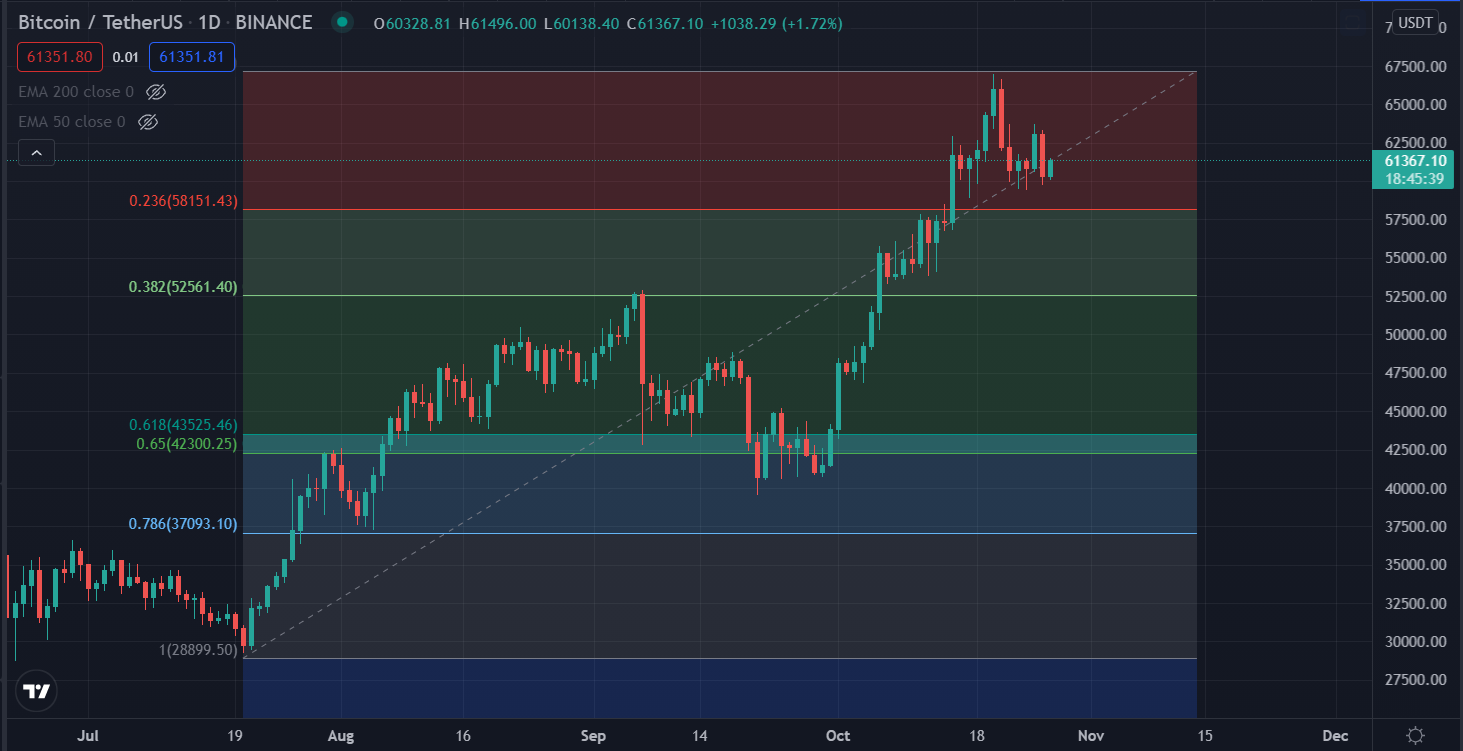Developed by Leonardo Fibonacci in 1170 AD, Fibonacci ratios represent a set of key numbers known as Fibonacci retracement levels. These levels include 23.6%, 38.2%, 50%, 61.8%, and 78.6%. These levels are widely used in technical analysis to identify potential support and resistance levels in financial markets.
When drawing Fibonacci retracement levels, horizontal lines are used to represent these ratios. These lines are drawn from a significant swing low to a swing high or vice versa, depending on the direction of the market. The retracement levels help traders analyze how much the price has retraced from the previous movement, with the expectation that the prior trend will continue.
For example, if a stock has experienced a strong uptrend and then retraces to the 38.2% Fibonacci level, traders may expect the stock to find support at this level and resume its upward movement.
What is the process of using Fibonacci Retracement?
The Fibonacci sequence is a pattern of numbers that starts with 0, 1, 1, 2, 3, 5, 8, 13, 21, 34, 55, 89, 144, and so on. Each number in the sequence is the sum of the two previous numbers, and each number is approximately 1.618 times greater than the previous number. These ratios are derived by dividing the numbers in the Fibonacci sequence.
Traders use Fibonacci ratios to identify potential support and resistance levels, set stop-loss orders, and determine take-profit targets. The most commonly used Fibonacci ratios in technical analysis are 23.6%, 38.2%, 50%, 61.8%, and 78.6%.
For example, if a stock is in an uptrend and the price retraces to the 61.8% Fibonacci level, traders may expect the stock to find support at this level and continue its upward movement. Conversely, if the price breaks below the 61.8% level, it may indicate a reversal or a weakening of the prior trend.
What is the process of drawing Fibonacci Retracement?
When drawing Fibonacci retracement levels, traders typically use a charting software or platform that has a Fibonacci retracement tool. Most traders use Fibonacci retracements on a 1D (daily) chart to identify the long-term trend of an asset.
First, traders need to identify a significant swing low and swing high in the price movement. This can be done by visually analyzing the chart or by using other technical indicators. Once the swing points are identified, the Fibonacci retracement tool can be applied to draw the retracement levels on the chart.
For example, if analyzing the price movement of a cryptocurrency, the trader would select the lowest price point and the highest price point within the desired time frame. Then, using the Fibonacci retracement tool, the trader would draw the retracement levels on the chart.
It is important to note that Fibonacci retracement levels should not be used in isolation. Traders often combine them with other technical indicators and analysis methods to confirm potential reversal or continuation signals.
Here is an example of how Fibonacci retracement levels can be applied in practice:

In the above chart, the Fibonacci retracement levels are drawn from the lowest point on the 1-day chart of Bitcoin (BTC) to its highest point. The Fibonacci ratios can be seen on the left-hand side along with support lines. BTC broke the 0.65 ratio, also known as the ‘golden pocket’, and then moved up to the 0.382 level. When it broke that level, 0.382 became its support, and it consolidated for a few days before breaking the 0.236 lines on the Fibonacci retracement chart.
What is the best setting for Fibonacci ratios?
The choice of Fibonacci ratios to use may vary among traders, but the most commonly used ratios are 23.6%, 38.2%, 50%, 61.8%, and 78.6%. These ratios are derived from the Fibonacci sequence and are considered significant levels of support and resistance in financial markets.
It is important to note that Fibonacci retracements, like any other technical indicator, have some limitations. One disadvantage is that this indicator is not objective and works well only for certain assets. For Fibonacci retracement to be effective, a significant number of traders must use the same Fibonacci ratios and take action based on these levels. Therefore, it is advised to use other technical indicators in conjunction with Fibonacci retracements to confirm signals and enhance decision-making. Some commonly used indicators in combination with Fibonacci retracements include the relative strength index (RSI), Moving Average Convergence Divergence (MACD), on-balance volume (OBV indicator), Aroon indicator, and the stochastic oscillator.




